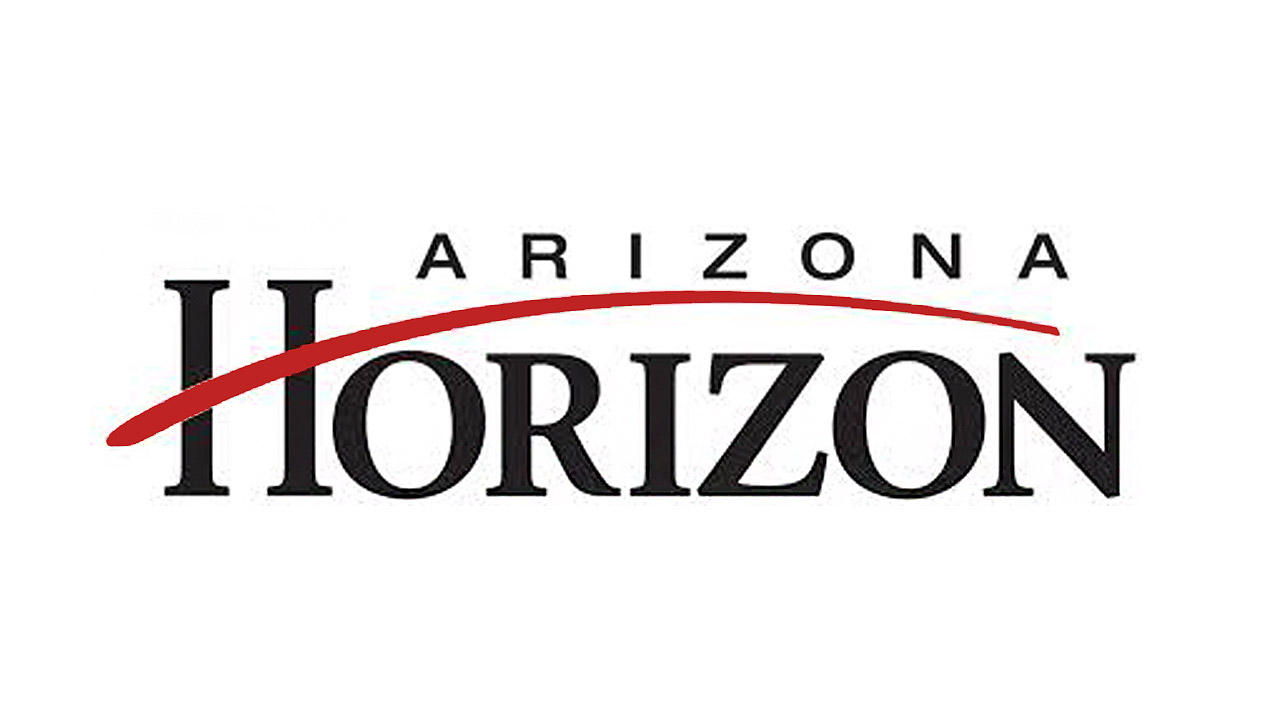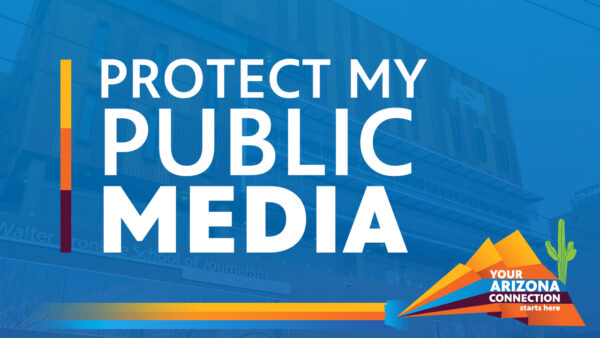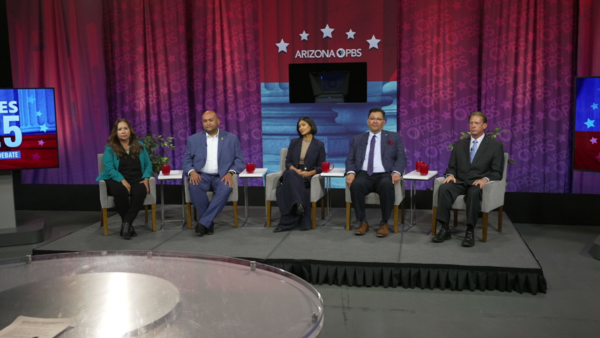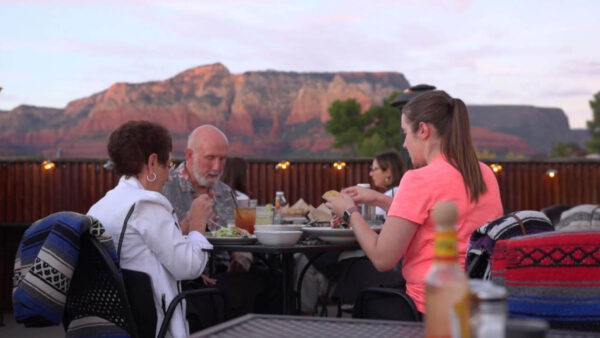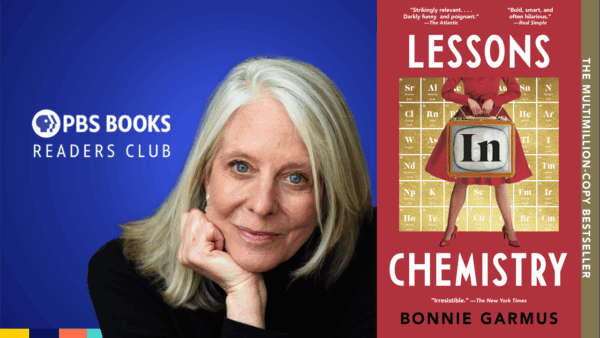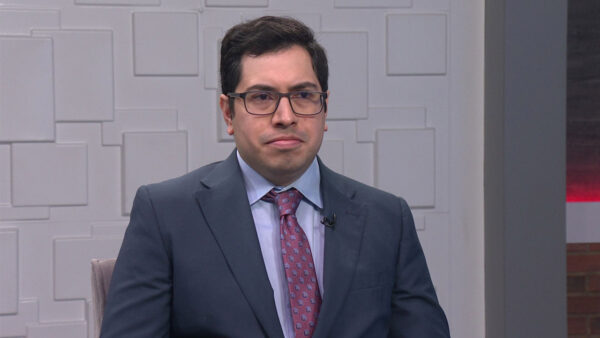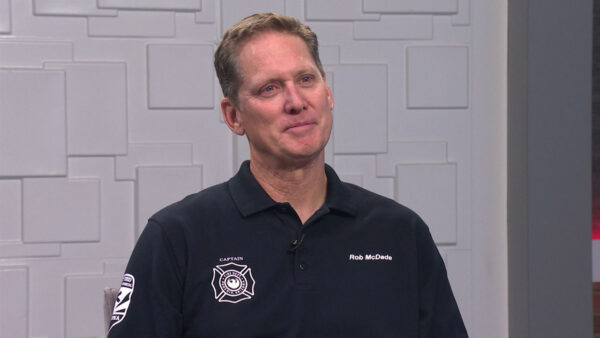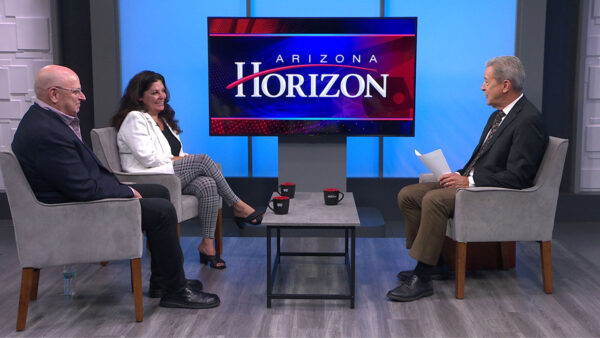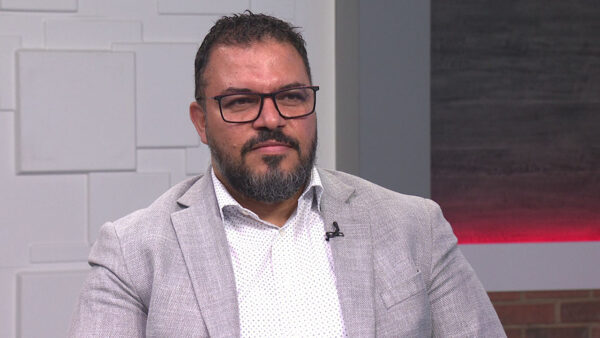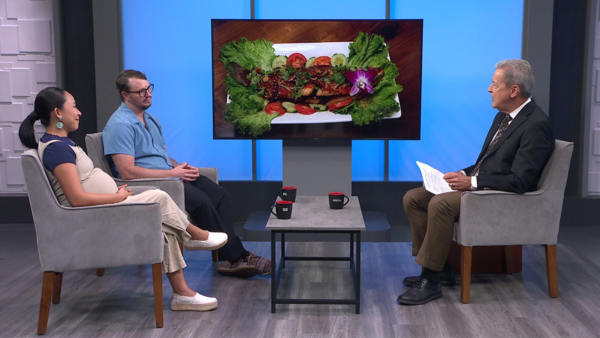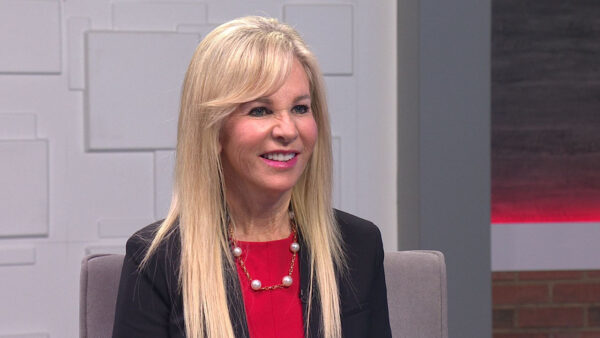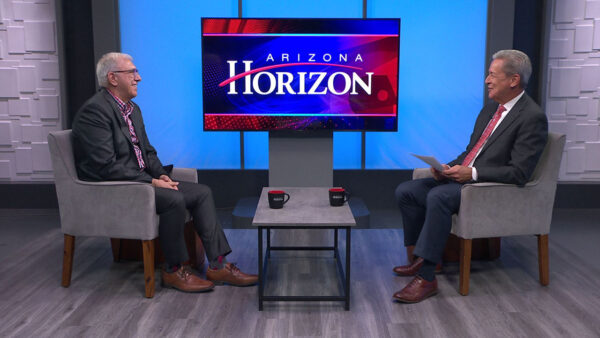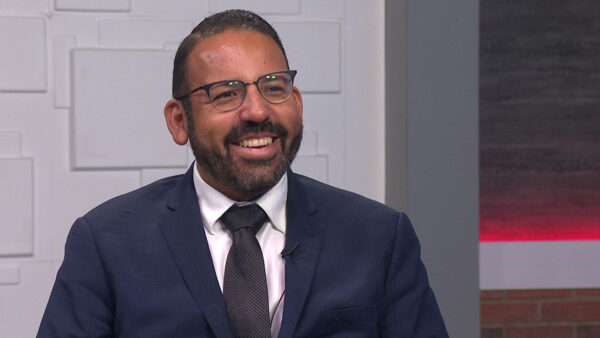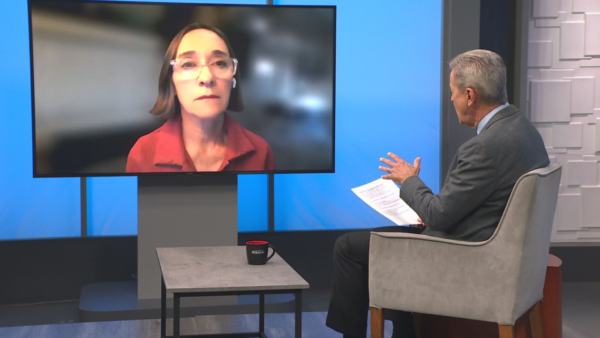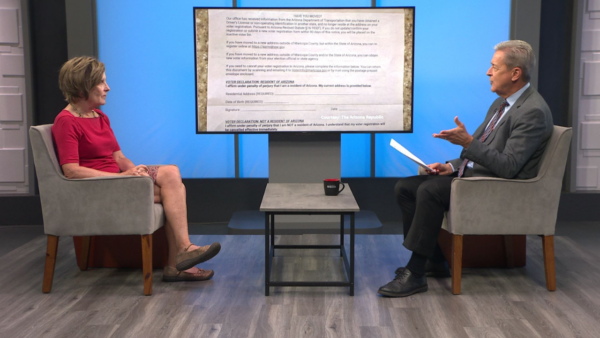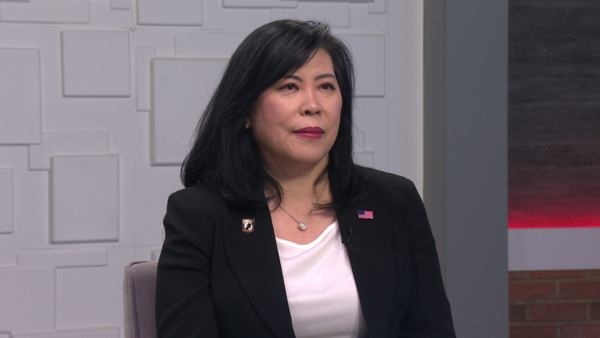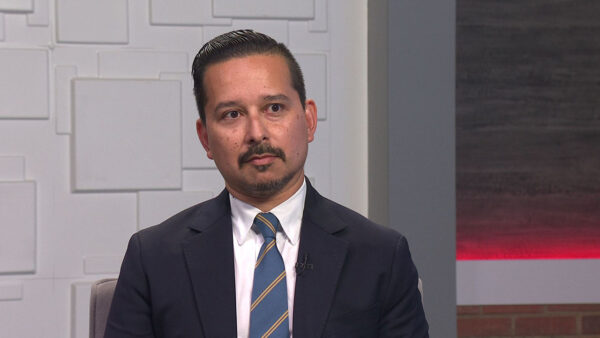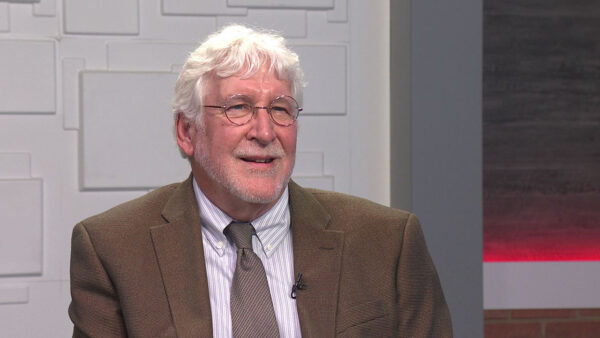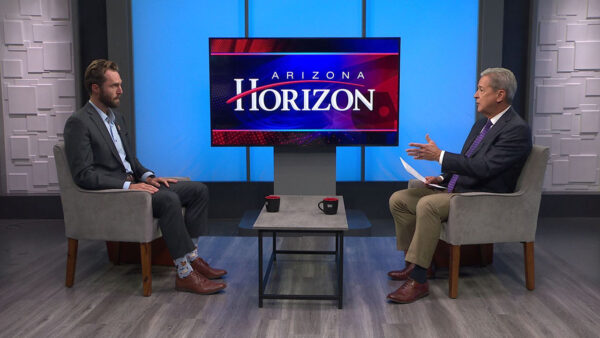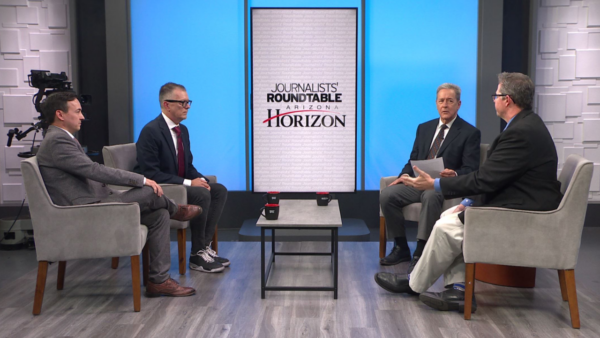skyrocketing gas prices have hit us all, but consumers have also been put on notice to expect substantial increases in their home heating bills this winter. The AARP says this year Americans are expected to face the largest one-year increase in home heating prices in three decades. Older Americans devote a higher percentage of total household spending to residential energy costs. Find out what to expect this year and how your family can save on home heating costs.
>> Michael Grant:
Tonight, on "horizon," heading into flu season, are we on our last supply of flu shots, who shall get them and what can we expect when flu season hits full force. Plus many of us are turning up the heat, worrying about utility bills. This year Americans are expected to face a big increase in home prices. And the large binocular telescope at the mount graham international observatory in southern Arizona gives the first image. That's next on "horizon."
>> Michael Grant:
I'm Michael Grant, welcome to "Horizon." The crisp weather has many coughing, sniffling, and asking themselves, is it the flu orb hopefully is it just a cold? 2005-2006 flu season has just begun. Arizona is among the states already seeing some cases of the flu. Last year's flu shot shortage has some wondering if that will happen again this year. Here with a flu season update, the department of health services director, Susan Gerard, and state epidemiologist, David Englethaler. Now, David, I'm always thankful when I get through epidemiologists without blowing it.
>> David Englethaler:
You do a great job. [laughter]
>> Michael Grant:
We all remember last year there was a shortage of vaccine. How are we this year?
>> Susan Gerard:
Well, right now I think we're in good shape. We had, we had a, what, about two, three weeks there where there was a shortage, and it was 2 just really, really a distribution problem.
>> Michael Grant:
Supply of pediatric vaccine ok, as well?
>> Susan Gerard:
Dave has a better answer for that.
>> David Englethaler:
Right.
>> David Englethaler:
Everything looks really good right now. We're not having nearly the problems of, of providers not getting their vaccine. It's really starting to flow into the state, so we're not seeing issues we were seeing a month ago.
>> Michael Grant:
Was part of this, David, bringing, bringing this expects back into, into the loop or bringing, bringing additional production capabilities back into the loop that had, that had not been there previously or had shut down in.
>> David Englethaler:
Yeah. One of the manufacturers from last year was shut down because, because of some manufacturing problems. This year they are up and running, but they have been slow in getting their vaccine out, so that helps slow down the, the total flu vaccine supply coming in. Plus, there was other intentional and unintentional delays in the system. But now, we're seeing the vaccine coming in, which is, which is -- and it's just in time, the flu season is kicking off, and, and people still should get vaccinated. There should be plenty out there.
>> Michael Grant:
Who should get the shots, Susan? What are, what are the high-risk categories?
>> Susan Gerard:
Obviously you have, high-risk, your senior citizens, anyone with any kind of lung or heart disease, and of course, we always recommend children, as well. Auto immune disorders, those kinds of things that make you more susceptible to the infection.
>> Michael Grant:
David, what's the difference between -- refresh our recollection, what's, what's the difference between the flu and, and a cold?
>> David Englethaler:
Sure. The, the cold is something that pretty much everybody is going to experience at least once a year. It's really, really kind of the sniffles. Sometimes you can feel kind of sick, but the flu will knock you on your back. You get the fever, the muscle ache and is pains. You can get the runny nose, but you also, you also get a lot of the, of the muscle ache and is pains that, that really, really, really tells you that its probably flu.
>> Susan Gerard:
And it comes on fast, too. Like the colds will build for a couple days.
>> Michael Grant:
Well, and it, and it has a tendency just to hit you immediately.
>> Susan Gerard:
Yes.
>> David Englethaler:
Ok.
>> Michael Grant:
Um, what, what sort of, of -- let's start nation-wide, what kind of, of flu season do we seem to be having nation-wide?
>> David Englethaler:
It seems to be probably the typical, normal flu season. We're not seeing, seeing excess cases early on, but we are 4 seeing, seeing it build up throughout the country, about half the states in the country have reported flu cases, and that's increasing every week. As we would typically see as the buildup to the peak of the season, and for the most part, the strengths have been identified, are covered by the vaccine, so that's good news so the vaccine will be effective this year.
>> Michael Grant:
Because to a certain extent, every year, isn't there something of a guessing game that goes on?
>> David Englethaler:
Yeah. The, the flu viruses tend to change or shift just a little bit. What we call, actually, genetic drift where you just have some minor changes in the viruses, so they have to make minor changes in the vaccine. And so every year it's a guessing game, but it's based off of some good information about what we're seeing in other parts of the world.
>> Michael Grant:
Ok, now, let's localize. What sort of, of flu activity have we seen so far?
>> David Englethaler:
Well, we have had flu activity for a little over a month. But, it's still low level. It's in about five counties around the state, and, and it's probably increasing every day, we're seeing cases. It's a very typical flu season, so we're not seeing anything unusual, but it is building up, and people should go out and get vaccinated, and then follow up with other things to make sure you don't get flu or give it to somebody else. Wash your hands, wash your hands. Cover your cough. Stay home if you are sick, keep your kids home if they are sick, and that way we really help prevent the transmission that we see.
>> Michael Grant:
Susan, generally, what roles does, does the department of, of health services occupy in relation to something, something like the flu? Obviously, one of the roles it occupy is monitoring.
>> Susan Gerard:
Right.
>> Susan Gerard:
Surveillance, you know, is primary, the primary responsibility, but then as public health, we tried to get out educational messages to, you know, the populations, you know, and sometimes it's different populations or different parts of the state where you will have the issues with, with diseases, so, so, you know, we're trying to get out the message. The other thing is, is the governor signed an executive order to, to have us, us do a better -- making it possible for us to have resources to do an educational campaign for people to get the, the pneumonia vaccine, which helps prevent secondary infections because that's what really, really often kills people. It's not the flu, but it's when they get the flu, they end up with pneumonia. So, if we can, if we can prevent those cases of pneumonia, if we can also lessen the effect of the flu, so we're, we're going to be starting a campaign on that level, too to, make sure that people with high risk get that pneumonia vaccine. 6
>> Michael Grant:
And didn't I hear something recently that, that, um, that, that if you had gotten the shot once, you're ok most of your life, but after you hit a certain age, you ought to be getting pneumonia booster shots or whatever? Whatever it is?
>> David Englethaler:
Yeah, I think the pneumonia vaccine is, is a pretty good vaccine, but, but after you get the age of 65, your immune system starts to drop off, and therefore, the things you're immune to drop off, as well, so it's typically a booster every five years after you turn 65 is recommended.
>> Michael Grant:
Susan, I seem to recall the department of health services occupying a distribution function in relation to the vaccine last, last year. Was, was that just peculiar to, to the situation that existed last year?
>> Susan Gerard:
There was problems in trying to get it, to the places of greatest need and population, greatest need we stepped in and, and, and helped, helped make that happen.
>> Michael Grant:
Procure some emergency supplies?
>> Susan Gerard:
Yes.
>> Susan Gerard:
We also do, do the -- administer the federal vaccine for children's programs. So, we do distribute those, but that's, that's -- that's done regularly, but that's the only thing that we do year-to-year.
>> Michael Grant:
David, one of the things we have been hearing more about recently is, is Tamaflu. What is Tamaflu? 7
>> David Englethaler:
Well, Tamaflu is, is an anti-viral drug specific to influenza viruses. It's effective as both the treatment, and if you get it, and you start taking Tamaflu right away and it is prescribed by your doctor, it will help prevent or lessen the overall disease that you get from influenza. It's also good for a front of lactic measure, if you know you have been exposed, you can take it and it will prevent you from getting the disease. So, the reason why we've been hearing about it recently is because of all of the talk about pandemic influenza and bird flu and hoarding of, of our stockpiling of the Tamaflu just, just as a, as a preparedness measure.
>> Michael Grant:
In fact, because of some reports of hoarding, they actually, actually pulled back a bit on, on the supplies, at least for the time being?
>> David Englethaler:
Some companies were purchasing large stockpiles for their employees, but that was preventing what, what is available out there to get into, into either to public health hands or into the medical providers that needed to treat patients, so the makers of Tamaflu are now preventing people from stockpiling it themselves and are now working with the government entities and with health care providers.
>> Michael Grant:
Well, how is Tamaflu different? We talked about the guessing game that occurs in terms of well, we think it will be x brand of, of flu this year, so we'll make this, this vaccine. Is Tamaflu, for lack of a better term, is it like broader spectrum or something than, than the specific flu vaccine you would normally get?
>> David Englethaler:
It is in regards to the fact that Tamaflu is effective for all known human influenza viruses so it is broad spectrum, but it is only for influenza and doesn't work against other illnesses.
>> Michael Grant:
So Susan, based upon what we know right now, it looks like a, a moderate flu season in Arizona or, or do we know yet?
>> Susan Gerard:
Well, speculation is it will be an average or just normal flu season, not extra strong or extra weak.
>> Michael Grant:
Ok. And David, once again, give us some of the ways you can, you can try to avoid this, this darn thing.
>> David Englethaler:
Well, clearly, the flu shot is important. We pushed that as much as possible. Not just for those people, but if you have family members that are at high risk, it helps prevent you from spreading to those individuals, and then, of course, the washing of your hands, cover your cough or some of most important things that we can do.
>> Susan Gerard:
And anti-bacterials, you know --
>> Michael Grant:
The soaps --
>> Susan Gerard:
Well, like a sanitizer can make a difference, and then there's also the flu-mist, which is, which is a nasal variation on the vaccine that's also effective.
>> Michael Grant:
Ok. Susan Gerard, good to see you again. Thank you very much for the information. David Englethaler, it's always a pleasure to welcome you. -On-the show more than I am.
>> David Englethaler:
Thanks, Michael.
>> Michael Grant:
And an increase in heating costs this winter could have many people lowering their thermostats dealing with cooler temperatures inside their homes. Utility companies say they are paying substantially more for natural gas. Those fuel costs account for about 70% of what residential customers pay, although that varies among utilities. In a moment, more on some of the factors driving up home heating cost and is some good ways to, to save on those costs. First, Merry Lucero spoke with a valley retiree who is making adjustments for the cold weather.
>> Merry Lucero:
It's one of several things. They tried to manage the winter heating costs, adjusting the thermostat to heat only when necessary.
>> Pat Holmes:
Absolutely, I'm going to drag it out as to when I'm going to turn on the heat. You know, you might have to turn it on in the evening, you know, because I have little ones. You are so glad to turn the air-conditioning off. You don't want to turn the heat on. You just can open the windows and have air.
>> Merry Lucero:
She pays her A.P.S. bill not knowing if the next one will be higher, and if so, by how much.
>> Pat Holmes:
I heard that it's going up. I don't remember that they have said it's absolutely going to increase or not. I can't say that they did get the rate increase. I know that there was talk of them getting a rate increase. I couldn't tell you that they absolutely are. I know it's a good-sized one, if they are going to get it.
>> Merry Lucero:
Higher crude oil and gasoline costs have impacted electric and natural gas utilities driving up the prices for consumers.
>> Pat Holmes:
They threatened us with $3, $3, and now they have gotten it down. Now you would be grateful for $3. Now the bill, if they get a 20% increase, you know, we get an increase, are we supposed to be grateful?
>> Merry Lucero:
Hanging laundry in the sun to dry rather than using a dryer is another way homes save. Seniors, whose incomes often shrink after retiring, typically devote a higher percentage of their household spending to residential energy costs.
>> Pat Holmes:
How many different ways am I going to have to adjust? This is our first experience of living like this. We're going to have to -- we, we -- our income has been cut by, by, by -- well, we are down to a fourth of what we had previously.
>> Merry Lucero:
As we head into winter, many seniors and those with fixed or low incomes don sweaters and cut corners until the warm weather returns.
>> Pat Holmes:
You just keep on going, but it's tough. If your health isn't what it should be, so you can't say well, I'll work that extra job, and make up for it like you did 25, 30 years ago. What do you do? A lot of us don't know. We're going to go day by day and hopefully make it.
>> Michael Grant:
Here with more on winter heating cost and is how to save on them is Jon Posten is a consumer advocate for the Arizona AARP on utilities. Jon, good to see you.
>> Jon Posten:
Good to see you, Mike. Thanks for having me here.
>> Michael Grant:
A lot of this driven by, by really a phenomenal spike in natural gas prices?
>> Jon Posten:
It is, and Mike, that's having, having an effect not only on, on natural gas prices, as we have seen from, from the various utilities that have asked for rate increases and received them recently, but also it's pushing electric prices up because the large electric utilities have, rather than chosen to, to take their peaking supply, the one that helps us get over the hump in the summertime.
>> Michael Grant:
Right.
>> Jon Posten:
And from, from natural gas-driven power pants, so, so the, the demand has gone up and the supply has not grown to match it, so we're seeing an increase in natural gas prices that's pushing both gas and electric prices up.
>> Michael Grant:
Now, natural gas is, is -- has been, has been increasing in cost -- actually, for about the past three or four years, it's been going up substantially. It has really spiked recently as part of -- is part of that 12 attributable to the troubles from, from the hurricane Katrina?
>> Jon Posten:
I think there's some hurricane trouble, and I also think that it's driven by, by some relationship to oil exploration costs and prices.
>> Michael Grant:
Um, what's our, our -- Jon, I don't know if you know this or not. Obviously, there's a fair amount of natural gas delivered in the state, in phoenix, Tucson, southwest gas. They deliver in the northern part of Arizona. Do you get a feel for how many homes are, are heated either by natural gas or, or by, by electricity keeping in mind, as you pointed out, it's really impacting the price of both commodities.
>> Jon Posten:
I don't know exactly, Mike, what that figure would be.
>> Michael Grant:
I have seen estimates, though, just in terms of gross estimates nation-wide that, on average, perhaps $350 more this year in home heating costs this winter compared to last.
>> Jon Posten:
Yeah. The, the figures that I have seen have indicated that, that people can expect to be paying $30 to $60 a month more for, for heating cost this is winter.
>> Michael Grant:
Well, retirees, people -- AARP is interested in, obviously, in many respects hit harder with these costs than, perhaps, other segments of the population.
>> Jon Posten:
They are. Folks who are still working normally pay about, oh, maybe 6% of their, of their income goes toward covering their utility 13 costs. For, for low income senior, people 65 and over, it can runs a high as 23%, so, we have a special concern for folks that are not only seniors but low income seniors, and most of those, by the way, are women.
>> Michael Grant:
What sort of, of -- let's start with just public assistance programs. If you are having difficulty making that, that 23% of your budget, what sort of public assistance programs are available?
>> Jon Posten:
Well, there are several. One of them is, is the lie heat program, which stands for low-income home energy assistance program. Congress is currently debating what they are going to do with that right now. We're, we're -- AARP is concerned that, that the costs of the program, or the money being funded to the program is being reduced. And, and we, we urged AARP is urging nationally that congress continue to fund that program at full bore. One of the concerns that we have in Arizona, and one of the things we hope our congressional delegation will do for us is not only make sure that money is available to go to heating programs, but also because of our situation, to energy programs that are devoted to cooling.
>> Michael Grant:
Yeah, I had heard that only recently. I did not, not know up to that point in time that it was available only for, for the, for the winter energy costs. Um, now, many utilities also have, have assistance programs in relation to utility bills, do they not?
>> Jon Posten:
They do, and some of them are, are voluntary programs. Some of them are programs that are, that are authorized by, by the corporation commission. The process is settling and deciding rate cases. AARP and Arizona is advocating that, that -- either way, we're actively working with the corporation commission, the department of economic security, Arizona community action association and others to see that, that -- if we can get a setup where people who come in and ask for public assistance are automatically enrolled in the, in the energy assistance and, and telephone assistance programs. Others, utility assistance programs, that they are eligible for. Right now, it's one of those deals where people run around and sign up for what they can. Some of the programs are not fully subscribed.
>> Michael Grant:
Pending that, and if you are wondering if you qualify for a public assistance program or utility program, I take it AARP has, has some people who, who answer the phone, information on websites, and that kind of thing that can help you out with that?
>> Jon Posten:
The most direct way to go about this is to, is to get in touch with, with the local Arizona community action association office or better still, the department of economic security. They can give you the information, and frankly, we're not set up to provide that, that kind of large volume response.
>> Michael Grant:
Ok. Weatherization, almost out of time, but one other way to, to help this situation is, is to just make your home more energy --
>> Jon Posten:
Absolutely. Open, open the blinds and the drapes in the daytime, let that sunshine in and warm up the house, close them at night so that, so that the cold air doesn't, doesn't enter the house. Plug up the drafts, close the chimney, and, and close the damper on the chimney when not using the fireplace. Dress, dress a little more warmly than you would. Turn the thermostat down a notch or two, and with, with the 20% increase that A.P.S. is getting ready to ask for, and that will be here -- hear next year -- it will be heard year by the corporation commission.
>> Michael Grant:
Thank you very much.
>> Jon Posten:
Thank you.
>> Michael Grant: The Mount Graham International Observatory in southern Arizona, there is a telescope known as the L.B.T., the large binocular telescope. It is the world's most powerful single telescope with its unique primary mirror. The L.B.T. recently achieved first light. First light refers to the moment when a telescope takes its first astronomical image after construction. Producer, Pam White, says this marks the beginning of a new era in observing the universe.
>> Pam White:
The most powerful and versatile telescope in the world 16 just took its first pictures. The 120 million large binocular telescope, or L.B.T., is located on mount graham in southeastern Arizona.
>> Richard Green Ph.D.:
It was just a thrill.
>> Pam White:
After years of planning, L.B.T. is now operational. The first light captured a spectacular image of gas clouds and stars 24 million light years away in the Andromeda constellation.
>> Richard Green Ph.D.:
To see the, the giant steel works, the state of the art, 8.4 meters and all the control systems required to, to address this wide field camera come together to, to make an image of astronomical quality -- it's a real milestone for a long road in this project.
>> Pam White:
Dr. Richard grain is the observatory director. Compared to other telescopes, he says L.B.T. is quite unconventional, and each piece of it was a challenge to build, including the two primary mirrors cast at the u of a mirror lab.
>> Richard Green Ph.D.:
This is the largest mirror that's been cast by the pair of mirrors cast by the university of Arizona's mirror lab, 8.4 meters in diameter, almost 25 feet across.
>> Pam White:
And it was an extraordinary effort transporting each 16-ton mirror up the mountain.
>> Richard Green Ph.D.:
There was a phoenix trucking company called "precision heavy haul," that custom designed these carriers for the mirror and, and their feeling about that telescope is just like that of our technical staff. They feel that, that they were deeply involved in the, the successful production of this 17 instrument, and, and in fact, they won a trucking award for, for the last year for the most challenging delivery of any trucking company.
>> Pam White:
L.B.T. took 20 years to design and construct. It's a technical marvel with a computer-controlled mount, advanced imaging instruments, and adaptive optics. For now, L.B.T. is operating with just one mirror.
>> Richard Green Ph.D.:
Because you have to crawl before you walk. We have to, to make sure that we understand the ability to control one mirror and to be able to control the mounting of the telescope and, and the dome-building that follows that telescope around so, that was always the plan, and that, that was the intention for first light.
>> Pam White:
The second mirror, and other instruments, will be installed over the next year, and when both eyes are open, L.B.T. will be taking pictures 10 times sharper than the Hubble space telescope.
>> Richard Green Ph.D.:
By getting this image sharpening, we can extend that outward to neighbors but more distant neighbors and get a broader palette for how modern galaxies came to be.
>> Pam White:
And astronomers will be able to look deeper into space and farther back in time than ever before.
>> Richard Green Ph.D.:
What we hope to observe in the infrared with these sharpening techniques are the individual pieces of large galaxies actually merging together. It's likely that, with the adaptive optics' mode, we can 18 start getting -- we can get information, and with this being combined, in combined mode, we can actually see, see the, the tiny sub pieces resolved in the regions of, of slowly growing density of material in the universe.
>> Pam White:
Dr. Green says that L.B.T. will be operated in different modes. For first light, images were captured by L.B.T.'s state of the art camera and showcases the wide field abilities.
>> Richard Green Ph.D.:
Our image format, at least initially, looks like this kind of odd shaped set of rectangles, and then we execute the series of observations in a pattern to fill in the gaps. The circumscribed circle almost is the diameter on the sky with the full moon, so it gives you an idea. It's an enormous field of view.
>> Pam White:
L.B.T. is an international collaboration with the U.S., Italy, Germany, Ohio State, and the research corporation.
>> Richard Green Ph.D.:
It's been congratulations. It has been a moment of celebration for the partners who have been together for a long time overcoming obstacles to get to this point, and, and our astronomer partners are starting to get hungry to get their data and to think hard about, about when they are going to see their observations, actually, conducted.
>> Announcer:
Join us for a "Horizon" special, disaster, is Arizona prepared? What types of disasters could happen in Arizona? How do government agencies 19 communicate? What would the public be instructed to do? And how can individuals prepare for an emergency. Join us for this special Wednesday at 7:00 on "horizon."
>> Michael Grant:
On Thursday governor Janet Napolitano joins us to talk about issues facing the state. To send her a question via email do so at our email address. That's Horizon.asu.edu. Thank you very much for joining us on this Tuesday edition of "horizon." I'm Michael Grant. Have a great one. Good night.
Susan Gerard:Director, Department of Health Services;David Englethaler:state epidemiologist;
